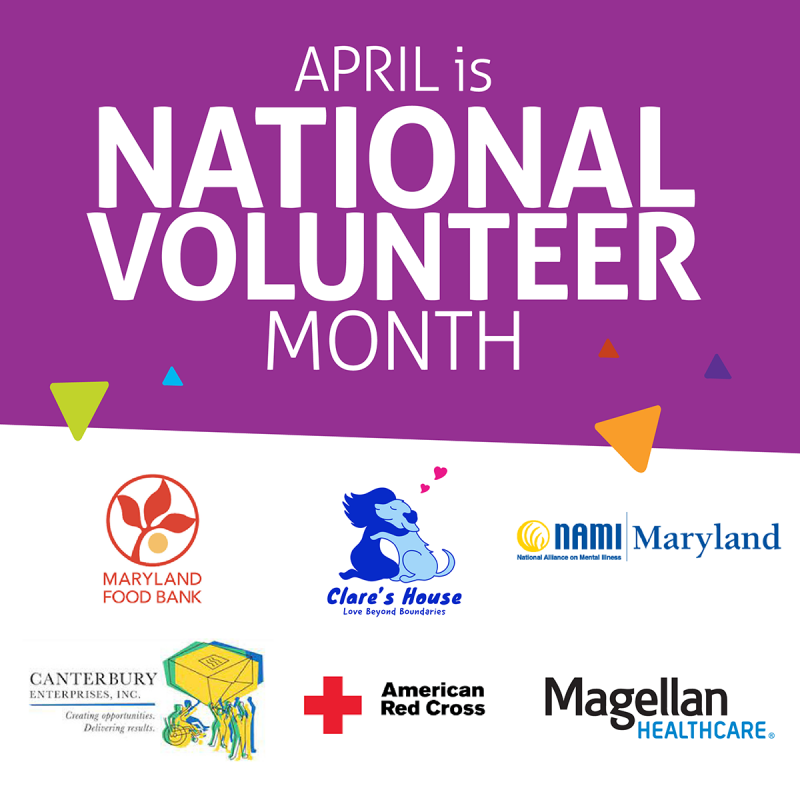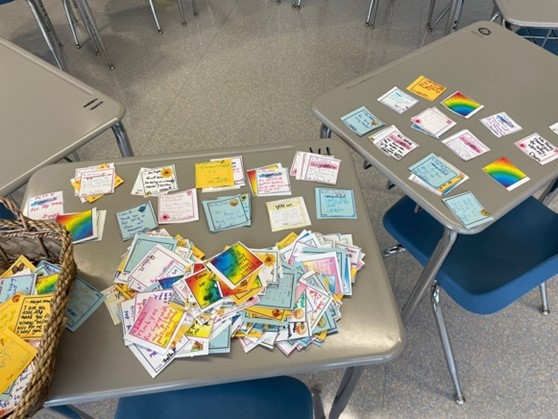Fostering Support for Youth Autism Awareness Through Building Communication, Accepting the Challenges, and Promoting Care
It’s a commonly accepted perspective in the field of mental health that all behaviors have a goal. When it comes to understanding youth who are challenged with an autism spectrum disorder (ASD), the key is realizing that all behaviors represent efforts to communicate. Rigid expectations of social behaviors and decision-making based on age can interfere with supporting a person on the spectrum, especially when communication is expressed differently when compared to the general population. While the behaviors of someone on the spectrum may seem unusual or even at times disruptive, the best approach for understanding a person with autism, especially youth, is to determine the goal, how the goal is communicated through their behaviors, and the intersectionality of those behaviors with peer interaction, transitioning to adolescence and adulthood, and adapting to new environments due to a military permanent change of station (PCS) or sudden absence of a parent. Intentionally diversifying sources of support can improve outcomes for youth especially as they transition into adulthood.
Understanding Autism[1],[2]
Autism Spectrum Disorder (ASD) is defined as a neurological disorder that, because of its effects on brain functioning, can negatively impact daily interactions such as socializing, displaying affection, and communicating. This impact has far-reaching implications, spanning multiple domains and presenting in an unpredictable manner. The severity of the disorder is compounded by co-occurring conditions and adverse reactions to sensory stimuli, such as lighting and noise.
The Diagnostic and Statistical Manual of Mental Disorders, Fifth Edition (DSM-5) provides further clarifying terms, using two identifying categories of symptoms to provide a basis for diagnosis of autism:
- Persistent deficits exist in social communication and social interaction across multiple contexts and restricted, repetitive patterns of behaviors, interests, or activities.
- Some of the characteristics include repetitive movements and speech, inflexibility, fixated interests, and hyper-/hypo-reactivity to sensory input.
Similarities With Other Youth[3],[4]
Youth with autism are prone to experience the same desires for friendships and intimacy as their peers. They share the same right to have educators and family educate them on this topic. These youth will also experience peer pressure and bullying, as all youth do. Kids with ASD crave same-aged allies just like others their age. They are vulnerable to missing non-verbal cues that mask sarcasm, teasing and even malicious intent. Peers who are not on the spectrum but have demonstrated healthy social skills are ideal for helping youth with autism to communicate and understand communication.
Differences From Other Youth[5]
Understanding autism in youth is more than a simple exercise in definitions and categorizing symptoms—a concerted and diligent effort for research is needed across disciplinary domains. The CDC’s Study to Explore Early Development (SEED) has provided the most comprehensive study of ASD in the United States, examining the health, functioning, risk factors, and signs present in preschool-aged children. Such a study empowers others to support the ability of a person with autism to effectively communicate. Amid a scarcity of research exploring ASD among pre-/teens, the SEED’s usefulness has been further expanded to survey the families of 800 children between the ages of 12-16 who were a part of the initial phase of SEED. Although similarities between neurodivergent youth and neurotypical youth can easily be identified, this study shines a necessary light on the differences between adolescent cohorts.
The findings in this report reveal that adolescents with autism experience a need for greater support in the areas of physical and mental health, as well as extending the use of healthcare beyond the stage of adolescence, in contrast to peers their age.
In comparison to adolescents in the control group of this study, children with autism were 90% more likely to have co-occurring mental or physical health conditions and at the same time more than three times likely to not access appropriate health care for those needs.
Being included in general education classrooms is a boon to social competence in youth with ASD, but not a fix. Social deficits create a need for interventions that coach social skills for them, such as initiating or inviting others to play and engage, while these skills naturally occur in typically developing youth.
A peer helper can assist with bridging the gap between these differences, offering the chance for youth from both cohorts to experience and engage in friendly behavior in a variety of environments, such as classrooms, recreational areas, or after-school events.
It may be difficult for a child from either cohort to articulate the differences, but the relational tension will be present, nonetheless. Interventions should assist both children, equipping them with clearly defined choices that improve the likelihood of forming a healthy social connection between them.
Challenges for Military Families
Military sources indicate that more than 13,000 military dependents, the majority being children, have some form of autism. No matter where they go, their families will always be the immediate support system, a system vulnerable to emotions and challenges related to the difficulties of military life: a permanent change of station, frequently absent or deployed parents, changing primary care managers and parental/marital stress.
A diagnosis of ASD means that every day a caregiver must plan every activity to prevent behaviors that will likely be misunderstood by those untouched by ASD. Even when connecting the youth with an organization that can provide care and interaction outside of the home, the caregiver will need to provide specifics about their child’s needs and determine if the environment they are entering is an adequate fit. The environment should include staff trained to intervene and redirect especially by understanding what behavior that seems disruptive is trying to convey on behalf of the child. Most parents and caregivers find themselves repeatedly having to explain to other professionals why their child reacted the way they did.
Another frustrating factor that families looking for support outside of the home encounter is simply a lack of affordable and competent sites. The emotional toll on a parent or caregiver from frequently reaching a dead end can exhaust even the most resilient. The chances of finding a great fit for a youth with ASD is generally cut in half by the lack of behavior management services, the expense of the programs, and the sad reality of untrained staff.
Military families also encounter increased hardship introduced by the search for evidence-based treatment services, especially when a new duty station proves to be a disruption to receiving quality care. Not all stations have ease of access to needed services.[6] Military children and their families move every few years. These frequent changes hinder the ability to maintain secure relationships in the school setting and with each move, the rigors of advocacy for individualized services are reborn. Any family who has dealt with a military move can vouch that the process is replete with paperwork. A family who has a child with autism has their work nearly doubled. Important documents and steps to take include, but are not limited to, the most recent copy of an IEP, a current behavior plan, medical documentation, connecting with the receiving school play son, a new therapist, and finding a neighborhood accessible to community-based services.
Financial strain is another stressor faced by military families. Spousal unemployment can easily become a dynamic for a family with a child on the spectrum. It is often simpler and more cost effective to care for the child at home, especially when hours for paid time off become depleted due to frequent calls from the school for a parent to come deescalate the child.
Frequent moves, financial strain, and harried reintegration processes can mount into a tremendous pile of stress leading to feelings of isolation and marital discord in many cases. Finding and building a support system, albeit challenging, is not impossible and is worth its weight in gold. Despite all the barriers and challenges of a military lifestyle, friendships and systems that are built often turn out to be lifelong relationships. Military living means that a challenge posed for one is a challenge accepted by all.
How the MFLC Program Can Help with Communication
The Military and Family Life Counseling program supports service members, their families and survivors with confidential non-medical counseling where they are stationed. Recognizing behavior as a form of communication is a skill possessed by Military and Family Life Counselors (MFLC) counselors. MFLCs are in an excellent position to support families and schools by providing referrals and psychoeducation about the need for behavior to be interpreted rather than reacted to.
Anxiety for anyone is an emotion that disables executive functioning. MFLCs can equip staff and family with language that prevents and even deescalates anxiety in youth with autism. A person with ASD may look away for a moment or two before responding to directions. Rightly interpreting this behavior can prevent the wrong reaction and a misunderstanding. A pause in responding doesn’t necessarily mean unawareness or lack of intellect—for the person with ASD, looking away may mean, I need a quick break from stimuli.
MFLCs can also help by increasing awareness of incorrect assumptions, such as the aforementioned “pause” as a lack of emotionality, and biases built into labels such as low or high functioning. MFLCs can coach staff and family to ask, “what support do you need,” rather than assuming wrongly about the support needed at any point on the spectrum.
Effective communication is essential in at least two settings: school-based and healthcare. Data show a strong correlation between time spent in general education classrooms and increased academic skills and knowledge, receipt of a high school diploma, and/or increased access to typical peers, which promotes a primary desire for youth in general: healthy social relationships. The ultimate benefit is enhanced integration in the community. Youth participation in work opportunities, paid and unpaid, during high school is also connected to better outcomes in adulthood. To get started with the MFLC program contact your installation’s Military and Family Support center.
Tips for Preventative Healthcare
The single greatest external factor in fostering support for a teen preparing to enter adulthood is preventative healthcare. While under the care of their family, youth with autism benefit from services such as the Exceptional Family Member Program (EFMP), Extension for Community Healthcare Outcomes (a virtual interdisciplinary network for providers which includes parental feedback), Tricare, and Individualized Education Plans (IEP)/504 plans. However, as discussed, youth with autism are less likely to continue healthcare into adulthood. The goal for preventative healthcare is to equip the person receiving the healthcare with an awareness of what their health can and should look like and the right to receive that care.
An ideal strategy for improving health outcomes and reducing service gaps for youth with autism involves interdisciplinary training promoting the use of evidence-based interventions. Operation Autism lists several, including the most widely used, Applied Behavioral Analysis (ABA), Picture Exchange Communication Systems (PECS), and Speech and Language Therapy (SLT) across multiple contexts. At a minimum, as recommended by the CDC, care should be timely, coordinated, and family centered. Practitioners and school administrators should encourage parents and caregivers to enroll youth early in services, such as insurance plans and residential living, that support the transition to adulthood.
According to measures included in the Health Resources and Services Administration Maternal and Child Health Bureau National Performance as reported by the CDC SEED 2 study, practitioners should ensure three elements are met when establishing a wholesome health care transition:
- The youth should spend time alone with the primary care provider,
- The PCP should actively work with the child to understand healthy living, and
- The parent should know how the child will be insured when they reach adulthood.
Conclusion
The research-to-practice gap is steadily closing with studies such as SEED and the increase of evidence-based practices (along with the collective disapproval of ineffective and harmful treatment practices). Understanding the needs of youth with autism has been difficult but is no longer the apprehensive feat it once was, and while military families with ASD may have additional stressors, there is a system of support available to help navigate these challenges. Ultimately, communication is a gift for all human beings to use in the quest to understand one another, and establishing healthy communication with youth with autism is not simply a matter of teaching them what to say but it largely entails the ability to interpret what they are already saying.
This article was originally published on MFed Inform.
[1] Low Functioning to High Functioning Autism: A Prescriptive Model for Counselors Working With Children Across the Spectrum. Katherine Feather, 2016. https://www.counseling.org/docs/default-source/vistas/article_11d2bf24f16116603abcacff0000bee5e7.pdf?sfvrsn=4ca9442c_4
[2] Operation Autism. (n.d.). Life Journey through Autism: A Guide for Military Families
[3] Autism Speaks. 2013. Leading The Way: Autism Friendly Youth Organizations. https://www.autismspeaks.org/tool-kit/leading-way-autism-friendly-youth-organizations
[4] https://www.plannedparenthood.org/planned-parenthood-massachusetts/local-training-education/parent-buzz-newsletter/parent-buzz-e-newsletters/sexuality-education-youth-autism-spectrum
[5] Health Status and Health Care Use Among Adolescents Identified With and Without Autism in Early Childhood — Four U.S. Sites, 2018–2020. Powell PS, Pazol K, Wiggins LD, et al. https://www.cdc.gov/ncbddd/autism/autism-spectrum-disorder-in-teenagers-adults.html
[6] Toward Innovative, Cost-effective, and Systemic Solutions to Improve Outcomes and Well-being of Military Families Affected by Autism Spectrum Disorder. 2015. Klin et al. https://pubmed.ncbi.nlm.nih.gov/25745376/



